- Home
- Neil Gaiman
Stories: All-New Tales ngss-1 Page 36
Stories: All-New Tales ngss-1 Read online
Page 36
Such a period is, of course, where we find ourselves at the moment.
I might add at this point that my interest in the Cult is not a recently flowering one; I have been gathering references to it and carefully formulating my theories for many years.
FOR THE RECORD, MY interest was sparked during the waning months of the free world’s involvement in the Vietnam War. At that time I was a special attaché aligned with a covert arm of American intelligence, checking black-and-white photographs taken by spies and insurgents behind Communist lines-these were photos smuggled out of prisoner-of-war camps and such. I might also add that this was a period in which I was seeking to forget an unfortunate incident in my personal life: my young spouse, understandably lonely due to my lengthy absence, took up with another man and had a child by him. I sought solace by immersing myself in my work.
I began to notice in some of the photos I handled a recurring and curious phenomenon. Here and there, tucked in a corner or peering out from behind a barracks, was a peculiar figure wearing what seemed to be a false nose upon its face. Often the figure was identifiably male; at other times it appeared to be a female, or even a child. Many prisoners of war at that time, due to malnutrition and concurrent emaciation, were barely identifiable by their gender-or their age-so it must be remembered that any sort of positive identification was difficult. Many of the nose-wearing figures appeared beside, or within (though they were apparently not dead) mass graves.
I put these photographs aside, thinking that, though there was little here to interest my superiors, there might yet be something to investigate further.
I began to dream of figures, birdlike, resembling Bosch’s horrid hell beasts, wearing false, beaklike noses.
My collection of photographs grew. I realized that as the scenes of horror increased-by this time we were receiving covert daily pictures from death camps holding Americans and Vietnamese Buddhists-the number of nose-bearing figures increased. In one photograph-one I keep to this day folded in my wallet-a man, woman and child, in a long line of tired and bleakly hopeless prisoners, most of them in tatters of clothes hanging on barely enough bones to stand, being led meekly to an open pit by machine gun-bearing guards, have turned their faces toward the camera, three in a row, and are smiling a death’s-head smile. There seems to be a bit more meat on their bones than on those in front and in back of them.
They each wear the Nose.
OTHER ACTIVITIES SOON SAVED me from complete absorption in the manner of these curious photographs, and it was not until well after the war’s resolution, after I had settled in Montreal, far away from my ex-wife, her son and husband (who traveled extensively) that I came across a small bundle of the grainy pictures in a box (the above-mentioned photo was among them) and all of my former interest was rekindled. I began to search other sources-having a bit of influence, due to my war service, in being able to access materials not easily available by the public-and began to come across other photos taken in other sectors of the war in which figures bearing the Nose appeared.
I then broadened my research, and found similar artifacts among World War II memorabilia. I came across one precious bit of evidence (alas, recently lost to fire) that depicted a Third Reich rally in which two separate nosed figures could plainly be discerned. I remember this photo clearly, because one of the figures stood a few scant feet from Hitler himself, and grinned maliciously at the camera.
Eventually, my interest once again waned, until I picked up one morning in 1979 a London newspaper that contained a news-service photo on the front page presenting the dead body of the assassinated president of South Korea, Park Chung Hee. To the right of the body, barely visible in the deep background, was a figure with the Nose on its face.
I immediately researched other photos that were taken at the time but came up with nothing useful.
However, another reference turned up in a photograph of a train derailment that killed forty-five passengers in Ohio the same week: among the twisted metal a head could be seen poking through with the false appendage attached to it by a thin silver strap. The figure it belonged to, which was surrounded by dead commuters, was clearly alive.
I began to comb picture morgues and newspaper files, turning up hundreds of photos with similar figures in them. Most depicted disasters or near disasters; I began to notice that the number-and demeanor-of the figures often depended on the amount of destruction that surrounded them. Their faces glowed with pleasure in ratio to the amount of mayhem and carnage. This was by no means a strictly quantifiable thing, but the correlation, in general, seemed to exist.
Most of these photos, unfortunately, have also been destroyed by fire.
I began to notice small, easily missed references to the Nose, or the Cult of those wearing the Nose, in literature, and naturally broadened my research to include that area also, as I have already mentioned.
I had apparently stumbled onto something that had gone nearly undetected by the general populace, something that had stayed just outside the general consciousness since the beginning of recorded history. Here was a sect so arcane, nefarious and secret (a kind of truly devilish Freemasonry?) that no more than widely scattered references to it remained, or had ever existed. There were no prime source materials; the only evidence to point to its existence were the photos few and far between and a symbol-the Nose-so thoroughly steeped in the general notion of tomfoolery as to virtually ensure safety from detection.
The next step, of course, was to search for the modern remnants of the Cult.
My task of discovery proved to be a long and difficult one. It would take me days to recount the numerous blind alleys and dead ends I encountered; the false leads, misinformation (deliberate, some of it), the intrigue, deception, the attempts (yes) on my life. For years, I meticulously pored over each scrap of evidence that might at last lead me to the discovery of the true aspect of the Cult.
Eventually, despite all attempts to stop me, I succeeded.
IN THE SPRING OF this year my obsession led me to Paris, where I hoped to meet with a man under the pyramidic shadow of the Eilel Tower. I was to wait at a certain café until three o’clock in the afternoon, and then I was to ask the waiter to change my table to the one next to mine. It was a half-gray, half-sunny day in early April; there were breezes in the air that gave hope of a coming warmth mixed with the threat of a quick return to a latent wet winter. I had a coat and muffler on, and a black bowler hat. I carried a folded umbrella. In these things, too, I had followed instructions. I felt like a figure model in a painting by Magritte, felt I should somehow be floating in midair above the redbrick shop across the street, stiff and sharp as a cardboard cutout. Three o’clock came. I changed my table, tipped my waiter for his trouble and waited. Nothing happened. I bought a paper from a passing vendor, unfolded it before me and began to read. This kind of thing had happened too many times before; I would wait another ten minutes and then make my way, undaunted, back to my hotel. On the front page of the paper was a picture of a man with a black bowler hat on and a false nose. I heard the sound of the metal chair at the table I had just vacated scrape across the patio floor and the man in the photo, in the flesh, sat down across from me. He wore the Nose. The photo in the paper, I now saw, had been pasted on.
“You follow instructions, I see,” he said in clipped, neutral English, the schoolroom English taught all over the world. He did not wait for me to answer, but held out an envelope.
“Take this and continue to follow instructions.”
In the envelope was a ticket to a baseball game in New York City.
Two days hence found me in crowded Yankee Stadium. The seat beside me remained empty for eight full innings; by this time the home team had a commanding lead and many of the spectators had left. I took little notice when the seat was finally occupied by a young boy who had, I surmised, come down from higher, cheaper seats; it was happening all around me.
It was only when he turned toward me that I saw that, under his ball
cap, the boy wore the Nose. He smiled crookedly, handed me another envelope and slipped away.
The next weeks found me at a succession of similar rendezvous in public locations-theaters, restaurants, the London Zoo and Piccadilly Circus, a San Francisco streetcar. Always the pattern was the same. A messenger, identified by the Nose, approached and handed me an envelope with a ticket, or a short, untraceable note in it.
I always did as I was told. My obsession had become a compulsion: I was determined to find the source of the mystery.
I began to see false noses everywhere-in lines, in food markets, rising suddenly out of a mass of people on a street as if the wearer had put a box down and stepped up on it to elevate himself above those around him. My dreams were haunted. I would wake in the middle of the night calling for the Nose to confront me and be done with it. I had visions of my father and mother bathing me as a young boy, bending down over my shallow tub and splashing water on me, laughing. They wore the Nose-golden versions of it, tied with bright red ribbons behind their heads. One morning in Seattle, Washington, sick from lack of sleep, I hallucinated a man into my hotel bedroom doorway who bore a silver Nose in a tin box. The man himself had no face, only a blank oval of flesh.
And then, abruptly, on the same day as this hallucination, the Cult finally made its secrets known to me.
AFTER THE VISION DISSIPATED I spent the entire morning in the bath. My eyes were tightly closed; I sought a wakeful kind of sleep.
There came a knock at my hotel room door. I ignored it. The knock was repeated.
I called out tentatively, fearfully.
I was answered by a trill of tinkling, insubstantial laughter from the behind the door, which I had left unlocked. I stepped dripping from the bath into the living area in time to see the doorknob turning. I waited for the man with no face to reveal himself again.
The door opened to reveal an empty hallway.
I dressed quickly, in my Magritte out-t-black bowler, umbrella, black laced shoes-and put my research material hurriedly into my briefcase, snapping it closed with a jerk. As I did so a picture, the one depicting the führer and his nosed shadow, dropped out, to the floor. I retrieved it, and now saw that there were more cultish figures in the frame than I had at first noticed.
The platform on which Hitler stood was filled by figures with noses on.
I shoved the picture back into my case and closed it. I took the morning paper from the table by the door. The front-page photograph was of a gangster who had been drowned in his own bathtub-what looked like a false nose floated on the water near the submerged face.
On a hunch, I moved to the window, and just caught sight of a man, woman and child disappearing into the entrance to the hotel, eight floors below. I was plainly visible, but they did not peer back up at me.
I straightened my tie. On a hunch, I turned back to the window and there, sure enough, were the man, woman and child. They had retreated from the front entrance to the curb and stood staring up at me expectantly. The child waved.
He was the boy I had seen at the baseball park, with the crooked smile.
The man was the same one I had seen under the shadow of the Eiffel Tower.
The woman looked familiar also.
The three of them wore the Nose.
They reentered the hotel and I turned quickly from the window and set my briefcase by the doorway.
On the table where the newspaper had been was a can of fluid. I unscrewed its top carefully, avoiding the sharp industrial smell, and began to splash its contents around the room. When the can was empty I placed it by the briefcase. I removed a cigarette lighter from my coat pocket and casually flipped it open.
Flame burst up unexpectedly, burning my finger, and I was forced to drop the lighter. It did not go out, but instead fell into the liquid.
The fire before me burst to hot life. I was blinded momentarily. When I regained my sight the room was filling rapidly with smoke. I could hear voices beginning to build outside the window on the street, a few cries of alarm.
The man, woman and child, wearing their Noses, had somehow made their way into the room, and stood smiling at me as they quickly bound one another with ropes.
Gasping, I groped for the door, yanked it open and lurched out into the hallway and down the fire stairs. I stopped before the door to the street to brush and straighten my clothes.
I heard screams behind me. Like the tinderbox it was, the cheap hotel was exploding into roaring flames.
I eased open the door to the street. Television crews had already arrived with cameras; one of those pictures would undoubtedly grace tomorrow’s front page. I reached inside my coat to make sure that my ticket home to Montreal was in place. It was. Many of the reporters and spectators on the street wore Noses. A woman, wearing the Nose, fell, screaming, on fire, to the pavement in front of me. She was the one I had seen in my hotel room. Her hands were still bound behind her.
It was at that point that I realized with shock that I had left my briefcase behind.
I turned and, though a wall of flames met me, I went back.
AS YOU CAN IMAGINE, it is very painful for me in this condition. I cannot see through these bandages; I have not been told if I will have my sight back when they are removed.
And now, to my horror, I find my testimony on the Cult of the Nose disputed.
The literary references to the Cult are real, though they are scattered with the loss of my notes and would have to be researched once more. Other documentation exists; since the destruction of my valuable material it would have to be reassembled. I am told that my one remaining photograph, which was in my wallet, and which the unesteemed prosecutor contends I snapped myself, that of the man, woman and child in line, has been tampered with, and so cannot be used as evidence in my defense: the death camp has somehow been doctored into an amusement park, and now only the child wears the true Nose. The others bear noses that, oddly, have been drawn on with a felt-tip pen, and it appears that whoever did take the photograph was hiding in a hedge, since there are branches and small leaves visible in the forefront.
Obviously, I have been the victim of fraud and chicanery.
But this does not discourage me.
Nothing does.
Why?
Because I possess the most revealing bit of evidence proving the existence of the Cult of the Nose.
I know, without a shred of doubt, that it exists.
How?
It is obvious.
Because:
Despite all of the testimony that has been given against me here today; despite all of the lies and accusations; despite the spurious contention by the unesteemed prosecutor that I set the blaze in that ramshackle hotel deliberately, in order to murder my ex-wife, her son and husband, merely because she left me to have another man’s child while I was overseas, which, the unesteemed prosecutor contends, caused me to become obsessed, to track them for months, even years and, eventually, to murder them; despite all of this, I know that if my bandages were removed; if my ruined and melted face were restored and my eyes made whole; if I could look through the inches of useless salve and acres of white gauze that enfold my head-I know with certainty that if I could do these things I would see, upon the face of each of the twelve of you who have given me this sentence of death, the Adornment of which I have so eloquently spoken.
Kurt Andersen. HUMAN INTELLIGENCE
HE FOUND IT ALMOST PHYSICALLY PAINFUL TO LIE, which was unfortunate for someone who had spent most of his life as a spy.
Back when everything was proceeding according to plan, year after year after year, he had gotten a little sloppy, allowing bystanders to see the aircraft in flight, sometimes even announcing to children and their childlike parents who he was and where he lived. What did it matter, back then? Besides, he told himself, his openness created a rapport with the natives. But mainly it relieved his loneliness.
When people asked his occupation, his standard answer for a long time had been “a writer�
�� or “an anthropologist.” But lately, once again, he was responding to such questions with a more dangerous version of the truth. These gestures toward self-revelation felt exciting, like precursors to intimacy. But he never put himself in real jeopardy. In America in the twenty-first century, who was going to be anything but charmed and amused by a well-dressed, well-groomed, intelligent, alert, friendly old Anglo-Saxon-looking gentleman who made a fantastic remark or two? “I’m a spy,” he’d started telling the curious with a smile and a wink, “here on a long-term intelligence-gathering operation. But it’s super-top-secret, so if you don’t mind, that’s really all I can say about it.”
He had looked like an old man even when he was younger because, early on, before he took up the posting, he’d grown a full beard to conceal the purple cross-hatching of surgical scars on his chin and upper neck. Now that he was genuinely elderly, it pleased him that appearance and reality had come into sync. He looked old and, by any standard, he was old. One less lie to live.
Of course, if he told the whole truth, anyone but a lunatic would consider him a lunatic. Then the authorities would be notified, and even in this comparatively enlightened era he would lose his freedom for the rest of his life. The project to which he’d devoted such vast time and effort-dutifully, yes, but with enthusiasm as well-would be for naught.
On the other hand, with the passing years that downside calculus had changed. Incarceration and 24/7 gawking would be unpleasant, no doubt, but the rest of his life was looking like a manageably brief time.
As for aborting the operation, he doubted that anyone at headquarters was any longer aware of him or his mission-if headquarters still existed. Doing his job had become easier and easier over the years, especially with television and the Internet-although, of course, the promiscuous availability of information also tended to make his job moot. Maybe the project was already for naught.

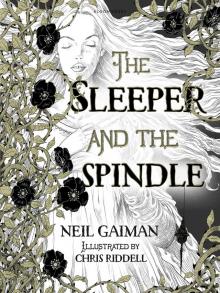 The Sleeper and the Spindle
The Sleeper and the Spindle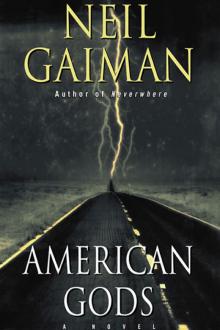 American Gods
American Gods Coraline
Coraline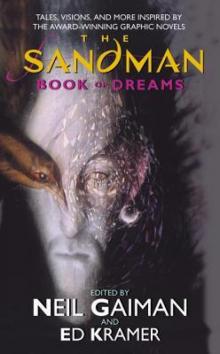 The Sandman: Book of Dreams
The Sandman: Book of Dreams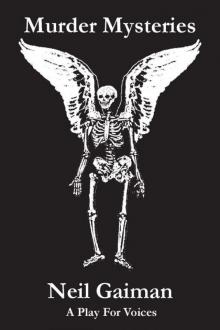 Murder Mysteries
Murder Mysteries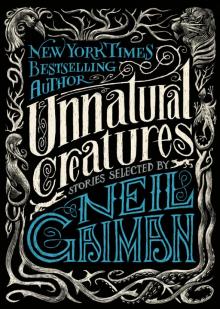 Unnatural Creatures
Unnatural Creatures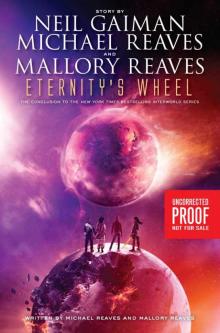 Eternity's Wheel
Eternity's Wheel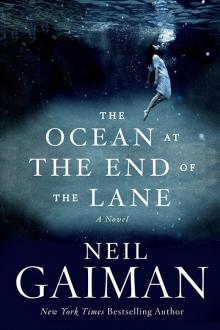 The Ocean at the End of the Lane
The Ocean at the End of the Lane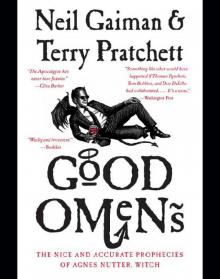 Good Omens
Good Omens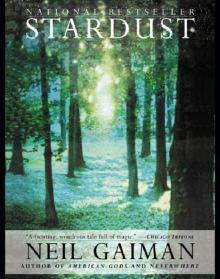 Stardust
Stardust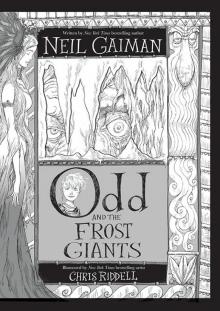 Odd and the Frost Giants
Odd and the Frost Giants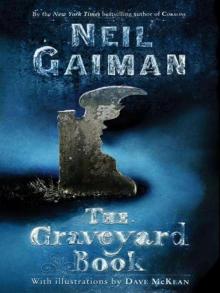 The Graveyard Book
The Graveyard Book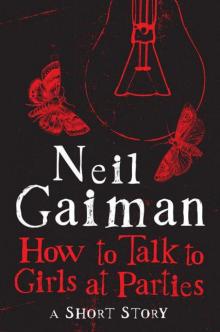 How to Talk to Girls at Parties
How to Talk to Girls at Parties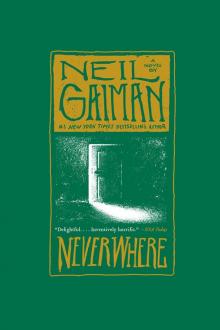 Neverwhere
Neverwhere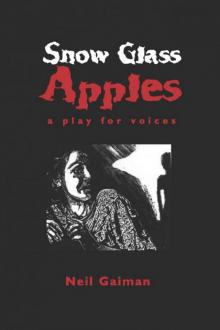 Snow, Glass, Apples
Snow, Glass, Apples Anansi Boys
Anansi Boys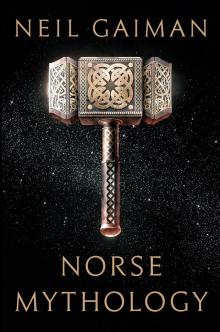 Norse Mythology
Norse Mythology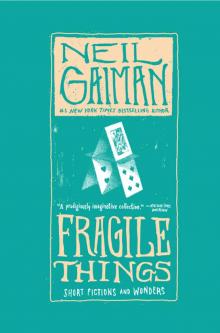 Fragile Things: Short Fictions and Wonders
Fragile Things: Short Fictions and Wonders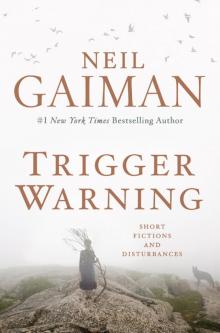 Trigger Warning: Short Fictions and Disturbances
Trigger Warning: Short Fictions and Disturbances InterWorld
InterWorld The Monarch of the Glen
The Monarch of the Glen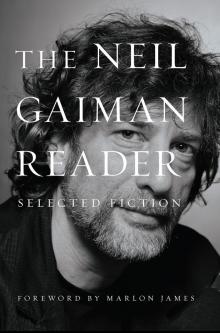 The Neil Gaiman Reader
The Neil Gaiman Reader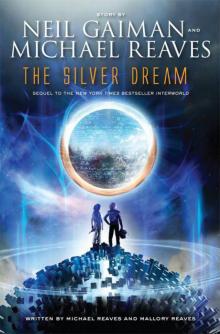 The Silver Dream
The Silver Dream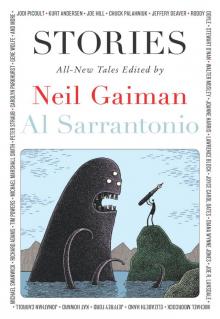 Stories
Stories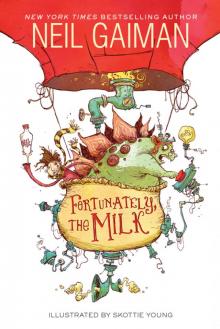 Fortunately, the Milk
Fortunately, the Milk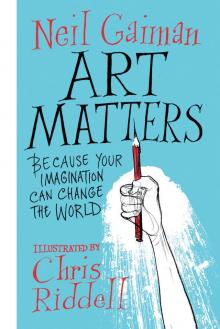 Art Matters
Art Matters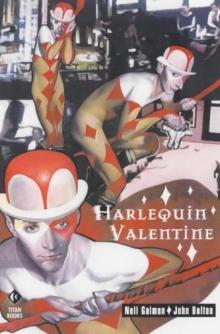 Harlequin Valentine
Harlequin Valentine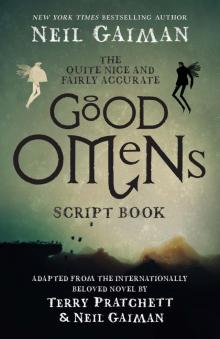 The Quite Nice and Fairly Accurate Good Omens Script Book
The Quite Nice and Fairly Accurate Good Omens Script Book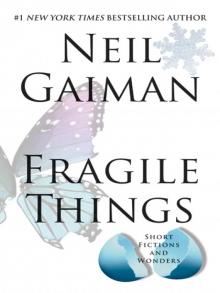 Fragile Things
Fragile Things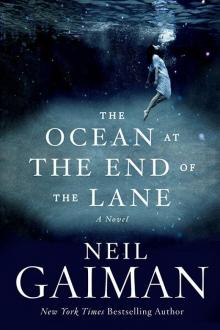 The Ocean at the End of the Lane: A Novel
The Ocean at the End of the Lane: A Novel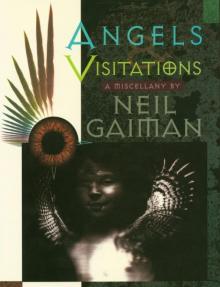 Angels and Visitations
Angels and Visitations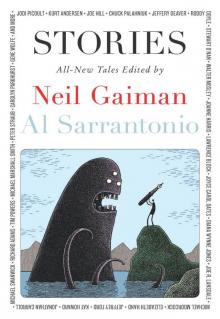 Stories: All-New Tales ngss-1
Stories: All-New Tales ngss-1 Don't Panic
Don't Panic Darker Terrors
Darker Terrors Neil Gaiman Young Readers' Collection
Neil Gaiman Young Readers' Collection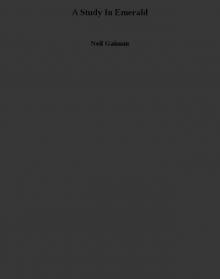 A Study In Emerald
A Study In Emerald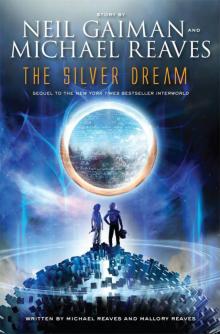 The Silver Dream: An InterWorld Novel
The Silver Dream: An InterWorld Novel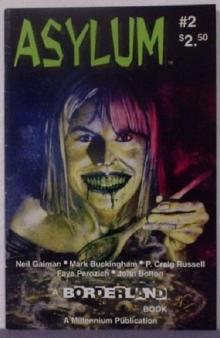 Feeders and Eaters
Feeders and Eaters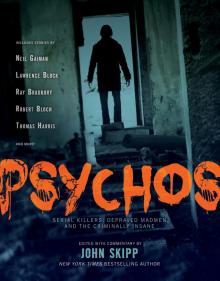 Psychos
Psychos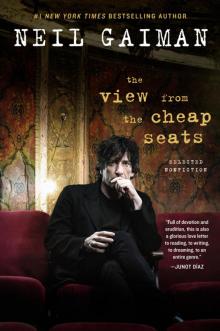 The View from the Cheap Seats
The View from the Cheap Seats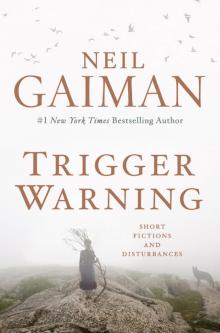 Trigger Warning
Trigger Warning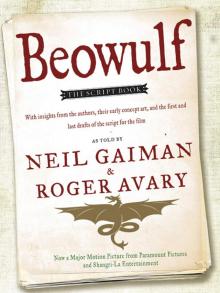 Beowulf
Beowulf Nessun Dove
Nessun Dove Doctor Who: Nothing O'Clock: Eleventh Doctor: 50th Anniversary
Doctor Who: Nothing O'Clock: Eleventh Doctor: 50th Anniversary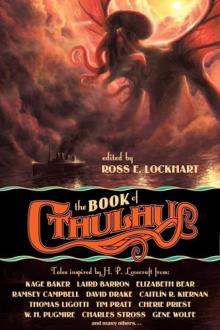 The Book of Cthulhu
The Book of Cthulhu